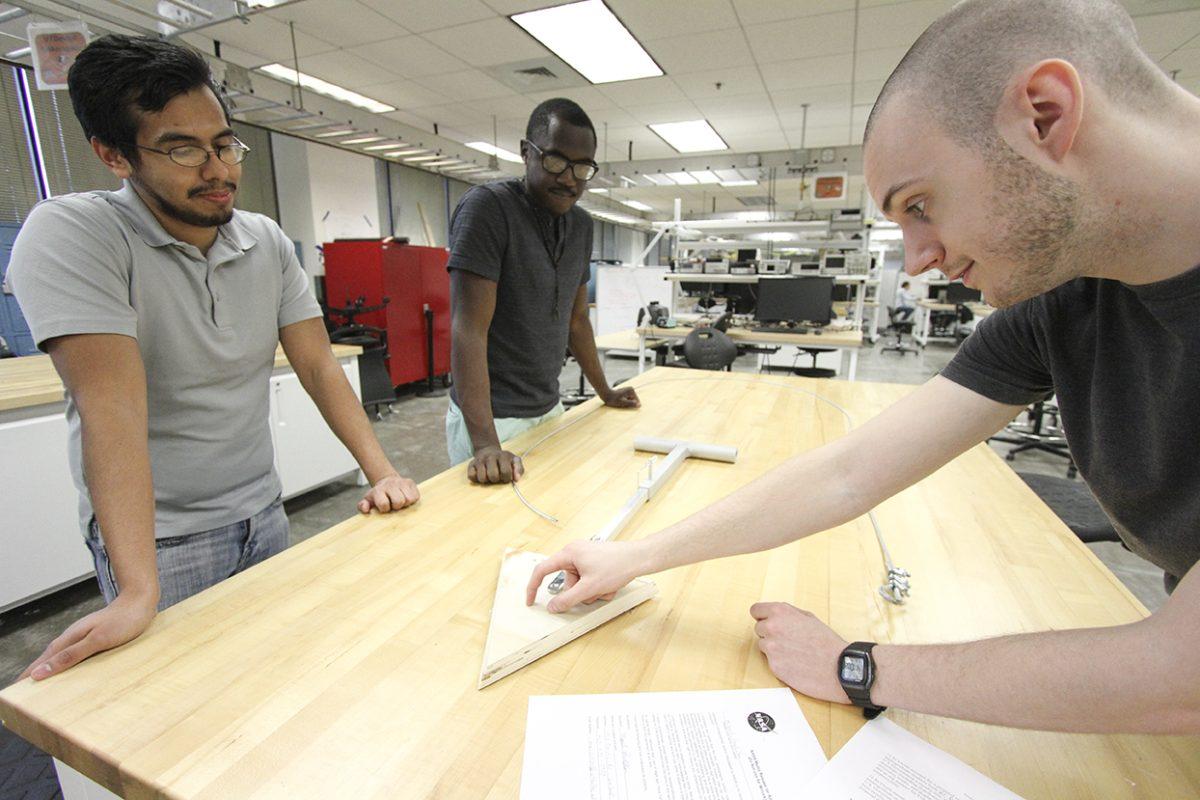Engineers build anchor to assist asteroid project
Correction: In a previous version of this story, James Carter’s title was incorrectly stated. The Mercury regrets this error.
A team of eight undergraduate UTD students has been chosen by NASA to participate in a program to construct a device that provides a solution for a recent space exploration problem.
It is called the Micro-g Neutral Buoyancy Experiment Design Teams program and teams from institutions all over the nation choose a challenge from a list of five problems. UTD’s team, Temoc Space Industries, is focused on designing and building an anchor for an asteroid.
One of NASA’s current projects includes taking humans farther than low earth orbit, specifically to explore asteroids. To counter the low gravity environment on an asteroid and remain on the surface, the teams who chose this challenge are tasked with building an anchor that will successfully grip the surface.
Mechanical engineering junior and team leader Craig Hartnell said his team’s design is like a shovel, which will penetrate the surface when pushed down. A cable attached to it can be pulled and hooked onto a payload to act as an anchor.
“It’s a perfect concept for a vehicle anchor,” he said. “The reason why the prototype is put into the soil by a person is because that’s just the way the program is set up because it all has to be tested by a diver in the Neutral Buoyancy Lab (in the Johnson Space Center).”
Hartnell heard an announcement about this program in September through an email and began putting a team together through interviews. By October, they’d submitted a proposal to NASA and had been accepted by December.
The fact that NASA uses the projects to collect new ideas to apply to current space exploration programs could mean that the team’s design could be put to use on a mission.
“It makes us really want to focus on building something that is useful and not something that just works in the pool because the environment in a swimming pool is pretty different from that on an asteroid,” Hartnell said. “It makes us more conscious that we need to be working on something that’s actually useful instead of something that just tests well.”
Every aspect of the anchor has been manufactured except the piece that goes on the bottom that will penetrate the soil, but the team has experienced hardships in areas other than the construction part of the project.
“One of the overarching challenges throughout the entire project has not necessarily been the engineering aspect of it, but NASA very much likes the team to participate with each other as if they are an actual company and the bureaucratic process of operating the team as a company has been a little bit challenging,” said Alessandra Sealander, a geology junior.
The team’s members serve as chief executive officers, accountants, marketing and outreach managers and engineers in order to operate as a business or as a small subcontractor. This includes providing NASA with analysis reports on how they’re functioning.
“It needs to be thorough and researched and properly analyzed before we submit anything to NASA,” Sealander said. “We’re not necessarily looking at this just as a school design project. We’re presenting ourselves as future employees perhaps to NASA.”
The team has built an online social media campaign to teach people about their company and co-hosted a lecture series with the Space Exploration Society of UTD.
They also organized lectures with James Carter, a professor emeritus and geochemist, who spoke about lunar simulants and John Hoffman, a physics professor who worked on the Phoenix landers project for Mars and the Apollo program.
The team’s product will be tested in the Neutral Buoyancy Lab during the week of May 23. This will be the second year that UTD participates in this challenge.
“This year we wanted to go with what we thought was the hardest (challenge),” Hartnell said. “We feel like we’d learnt a lot from the previous challenge and we kind of really wanted to test ourselves.”











